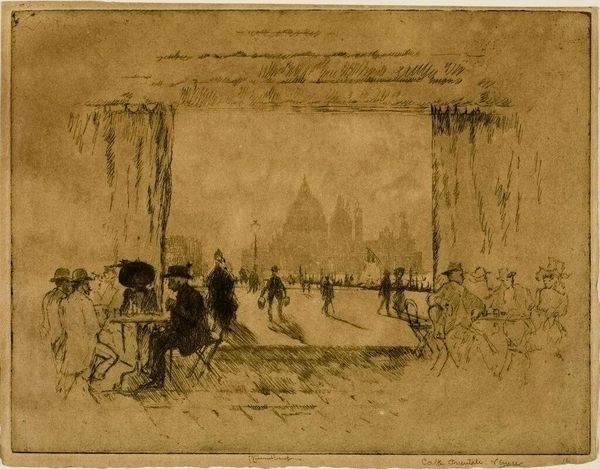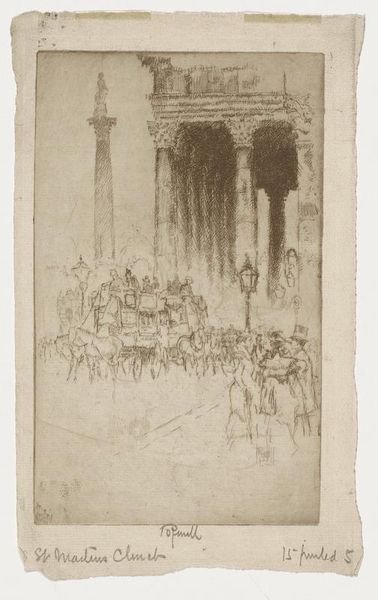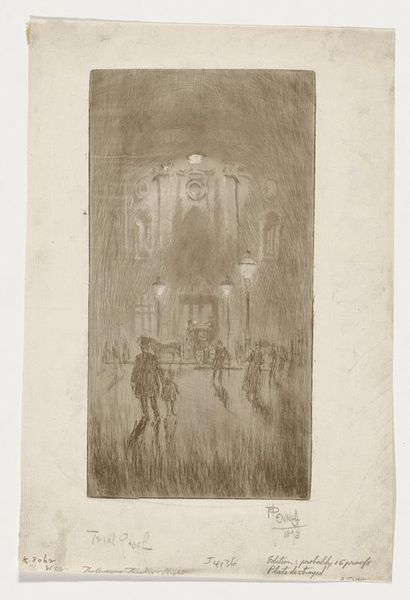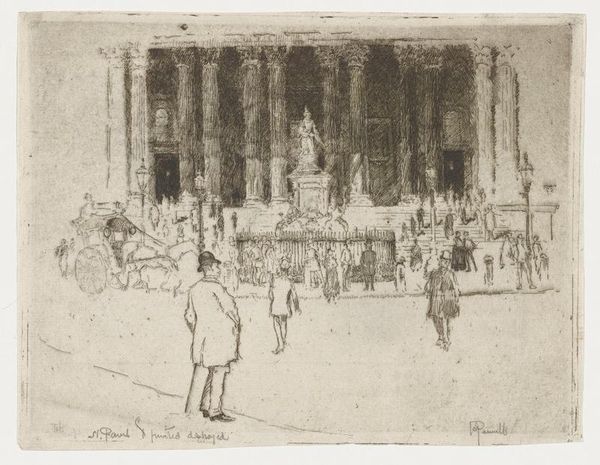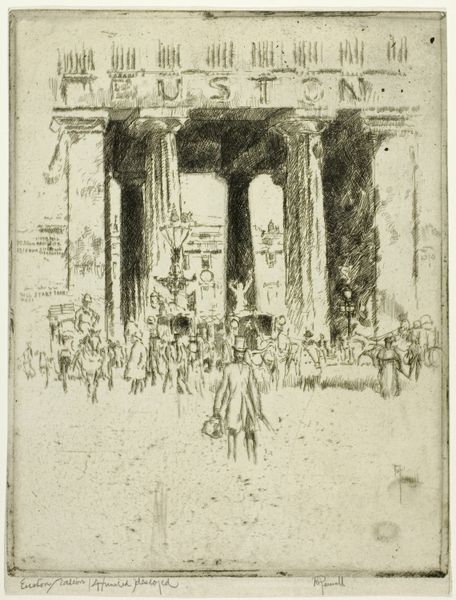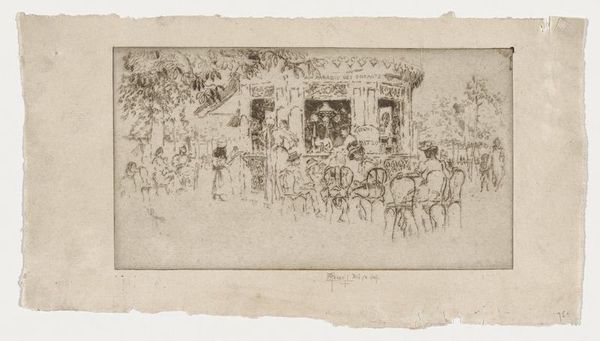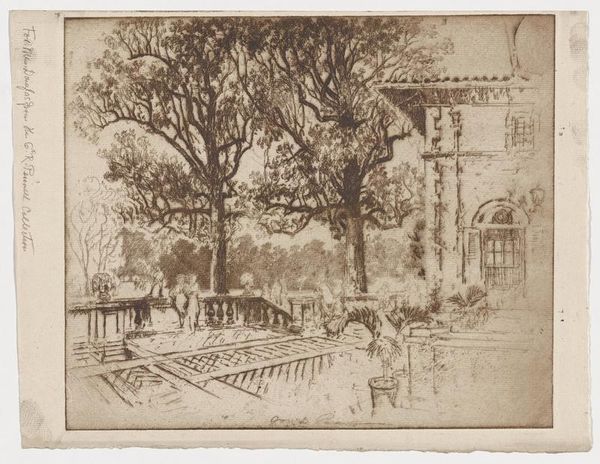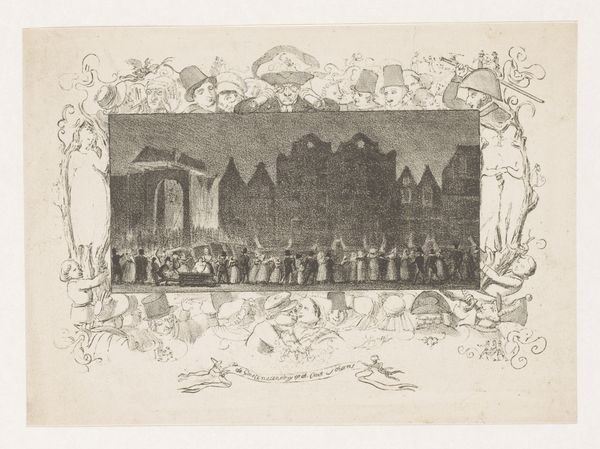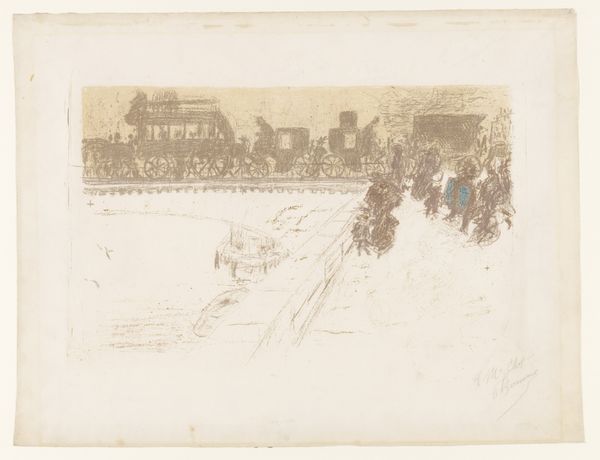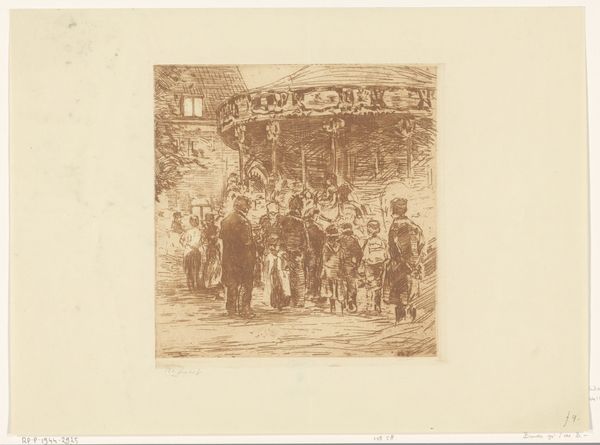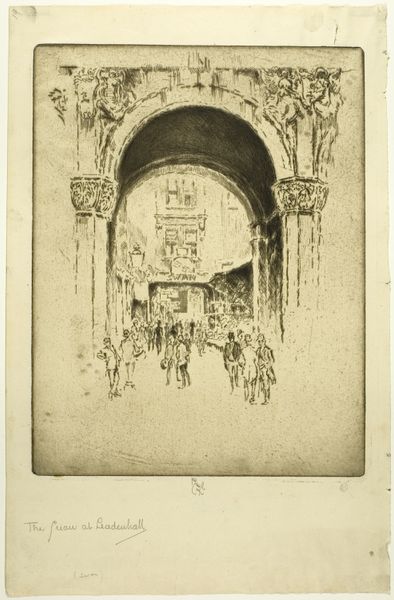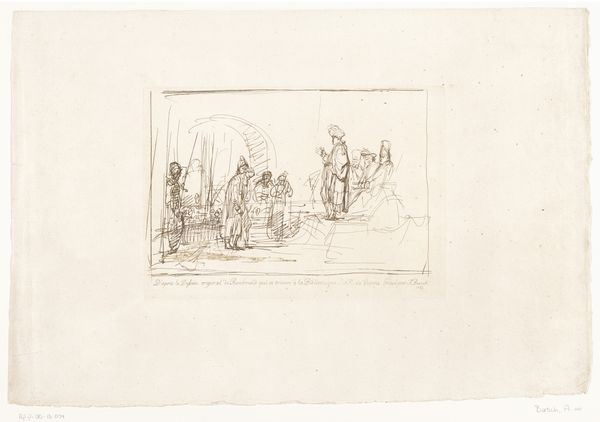
Dimensions: 9 1/2 x 12 1/2 in. (24.13 x 31.75 cm) (plate)11 9/16 x 15 1/2 in. (29.37 x 39.37 cm) (sheet)
Copyright: No Copyright - United States
Curator: This etching by Joseph Pennell, called "Café Orientale," was created in 1911, capturing a scene in Venice. You immediately feel the shimmering heat radiating off the Piazza, don't you? Editor: Absolutely, and beyond the visual heat, I sense a socio-economic temperature. Venice, even then, existed as a stage for consumption. It feels undeniably bourgeois. I immediately key into who gets to casually "be" in this space, and who is facilitating their leisure? Curator: Oh, that's interesting. I was just caught up in the almost ghostly impressionistic quality—the way the lines seem to dissolve into the air. Pennell was so enamored with light. Look at the dome in the distance, how it almost dematerializes into a halo. Editor: Light, yes, but look at those dark, almost violently etched lines delineating the figures in the foreground. Pennell's capturing not just a cafe scene, but class stratification. The bodies pressed into service are just as ghostly as the basilica if you fail to really "see" them. Curator: I suppose. Although he seemed less interested in overt political statements and more invested in portraying the dynamism of urban life and architecture... his cityscapes thrummed with a kind of energy, the rush of modernity. Editor: Agreed. Pennell gives us a glimpse into the making and maintaining of leisure for some, at the cost of others. These "cityscapes" were, and are, shaped by uneven access, power, and privilege. Curator: Well, either way, "Café Orientale" prompts us to look closer. Perhaps art helps us practice slowing down, perceiving things we might otherwise rush past. Editor: Exactly, and when it works best, also prompts a broader examination of the complex forces shaping not only what we see but the unseen costs beneath.
Comments
No comments
Be the first to comment and join the conversation on the ultimate creative platform.
